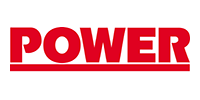
Small electric grids have been around since the beginning of electric power, but with modern wide-area synchronous grids, microgrids are now the dominant form for small electric systems. Early electric grids were powered by bulky fossil fuel-powered engines and evolved from direct current grids to alternating current grids with central generation as grids quickly expanded across the first electrified cities. Still today, organizations often use small diesel/gas-powered generators as a backup for grid failures.
Diesel/gas generators are self-contained grid systems that typically maintain voltage and match loads. As diesel/gas generator operating costs are high, it is not normally economical to export diesel/gas-generated power into the wide-area synchronous grid.
The situation is different with new distributed wind and solar generation. These new renewables, along with gas generation, are the main source of new power generation and are replacing retired central station power generation. Power from distributed solar and wind can serve local loads, reduce transmission loads, and export power to the wide-area synchronous grids. However, large remote generation sites may need new transmission to connect to loads in distant population centers.
Some large solar and wind farms are generators without island capability that are connected to larger wide-area synchronous grids. Adding battery storage or diesel/gas generators to solar or wind generation forms a microgrid (Figure 1) and can provide potentially valuable island operation, increasing local power reliability and resiliency. Distributed energy microgrids are normally connected to the wide-area synchronous grids and microgrids are increasingly providing more advanced services than just bulk export power and serving local loads.
Benefits and Challenges of Distributed Microgrids
Distributed microgrids present a business model challenge to investor-owned utilities and transmission systems as these microgrids are increasingly able to compete in wholesale energy, capacity, and ancillary services markets, and displace utility loads and utility revenue. Utilities are increasingly building their own renewable generation, often with a microgrid architecture to meet the demands for new generation and grid reliability required by regulators, but utilities are being asked to do much more than compete with distributed power. ISOs, RTOs, utilities, and regulators are working to transition electric grids to allow fair competition to provide reliable low-cost power. Utilities were once a natural monopoly. Now, they are being asked to help build out an efficient, workable, low-carbon distributed system, and figure out how they will fit into that system.





